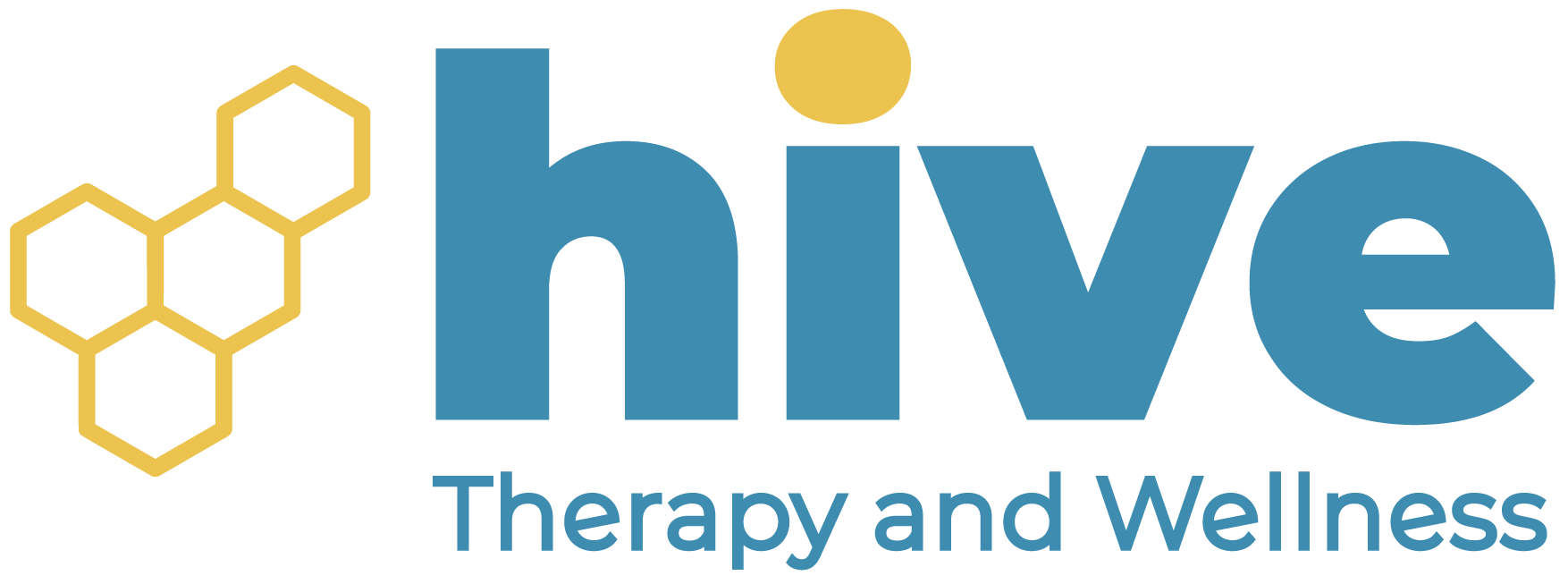Thoracic Back Pain
Move Better. Live Fuller. Your Wellness Journey Starts Here.
Schedule a FREE Discovery Call!
What Is Thoracic Back Pain?
Thoracic back pain refers to pain in the thoracic spine area, which is the middle of the back. This area is behind the chest, mostly between the shoulder blades. It extends from the bottom of the neck to the top of the waist area, and can affect the chest or ribs.
Although this type of pain is less common, it can sometimes be indicative of a serious issue—so it is important to seek the guidance of a professional, especially if your pain is very persistent or severe. In non-emergency cases where your thoracic back pain is caused by another condition or something less severe, physical therapy can be a very useful form of treatment for your symptoms.

Conditions or injuries of the thoracic back region can create a variety of symptoms, including the following:
- Localized pain: A common symptom that is often felt in the middle of the back, and can be dull, sharp and stabbing, or severe. This can be felt as pain between the shoulder blades or even into the areas of the ribs.
- Stiffness: Having stiffness or a reduced flexibility in this area of the back can make it difficult to move or bend over. It can make having good posture more difficult, and can cause hunching or poor athletic form.
- Muscle tightness: Similar to stiffness, the muscles around the thoracic spine can become tense and tight, limiting your movement and flexibility. This can create discomfort, difficulty breathing, and low range of motion for the neck and shoulders.
- Pain that radiates: Sometimes your pain may move into areas such as the chest, abdomen, arms, or legs. This is more common if the cause is from nerve compression, such as a pinched nerve. In some cases when nerves are irritated or compressed, it can cause numbness or tingling.
- Weakness: Muscle weakness can occur from nerve compression, often in the arms or legs. This symptom can be more alarming and indicative of a more serious issue, so as long as your condition has been identified and red flags are ruled out, physical therapists can step in.
- Difficulty breathing: Severe thoracic spine issues can cause problems with the diaphragm or ribcage, making it more difficult to breathe normally. Similarly to the previous symptom, this symptom can be a red flag. Physical therapists can address this symptom once your condition is identified as non-emergency.
What Causes Thoracic Back Pain?
This type of back pain is commonly caused by inflammation, poor posture, car accidents, lack of strength, overuse injuries, as well as many other factors or other conditions that can contribute to the pain. Those conditions may include:
- Osteoarthritis: Wearing down of the cartilage between bones, which can cause symptoms such as inflammation and pain.
- Osteoporosis: A disease that results in a decrease in bone mass or density, making fractures or other injuries more likely.
- Muscle sprains / strains: Muscle sprains can cause pain in the middle back, and are often caused by bad posture, overuse, or repetitive movements.
- Herniated discs: Pressure caused by a pinched nerve may create pain in the middle back.
- Ankylosing spondylitis: Causes inflammation in the joints and ligaments of the spine.
- Scheuermann’s disease: A condition that causes a rounding of the upper back, due to an abnormal growth of the vertebrae. This rounding of the spine causes back pain.
- Thoracic stenosis: A narrowing of the spinal canal that can create back pain, weakness, stiffness, and other symptoms.
- And more
Thoracic back pain can be found in individuals of varying ages. People assigned female at birth are often more predisposed to middle back pain. While some causes of this type of back pain can be more serious, not all causes are. In many cases, individuals who spend more time sitting, are prone to falls, exercise less, or who have poor posture are more likely to experience thoracic back pain.
Physical Therapy for Thoracic Back Pain
It is important to have thoracic back pain checked by a medical professional to ensure there are no emergency concerns or extreme causes that may be contributing to the pain. As long as red flags are ruled out for your case, you can jump into physical therapy to address your pain.
Because posture, muscle strength, flexibility, and mobility all contribute to thoracic spine health, seeking a physical therapist for your thoracic back pain can be an effective form of treatment as well as preventative health. Physical therapists are skilled in optimizing musculoskeletal health and can help their patients get into tip-top shape! They will provide guidance on exercise, stretching, posture, and more. Additionally, they can provide pain relief with a variety of treatments, such as spinal manipulation, dry needling, tissue scraping, and therapeutic modalities—just to name a few.
For those who play sports or perform repetitive movements in their careers, physical therapists can provide support and education on proper form to help patients perform these activities safely and efficiently. This can prevent cases of thoracic back pain and keep patients feeling their best!
In many cases, those who have a specific condition or past injury may have already had their case looked at and deemed non-emergency—and may be considering physical therapy for their symptoms. Physical therapy can be a great form of treatment or management for a variety of conditions and past injuries. Whether you have a nerve compression injury or a condition that makes breathing or movement a bit more difficult, a physical therapist can work with you to build strength, increase mobility, and improve your symptoms overall.
Or, if you are unsure where your symptoms are originating but don’t have any immediate red-flag symptoms or concerns, physical therapy can still be a great option. Physical therapists are highly trained and can identify possible causes for your condition. They’ll work with you to understand your unique case, and create an individualized plan of care to reduce your symptoms. To help you achieve relief from thoracic back pain, our physical therapists at Hive Therapy and Wellness may utilize any of the following treatments:
- Dry needling
- Cupping
- Manual therapy
- Spinal manipulation
- Electrical muscle stimulation
- Tissue scraping
- Exercise prescription
- Behavioral modifications
- Therapeutic modalities
- Neuromuscular re-education
- Biofeedback
- Therapeutic activity
Thoracic back pain refers to pain in the thoracic spine area, which is the middle of the back. This area is behind the chest, mostly between the shoulder blades. It extends from the bottom of the neck to the top of the waist area, and can affect the chest or ribs.
Although this type of pain is less common, it can sometimes be indicative of a serious issue—so it is important to seek the guidance of a professional, especially if your pain is very persistent or severe.
In non-emergency cases where your thoracic back pain is caused by another condition or something less severe, physical therapy can be a very useful form of treatment for your symptoms.
Conditions or injuries of the thoracic back region can create a variety of symptoms, including the following:
- Localized pain: A common symptom that is often felt in the middle of the back, and can be dull, sharp and stabbing, or severe. This can be felt as pain between the shoulder blades or even into the areas of the ribs.
- Stiffness: Having stiffness or a reduced flexibility in this area of the back can make it difficult to move or bend over. It can make having good posture more difficult, and can cause hunching or poor athletic form.
- Muscle tightness: Similar to stiffness, the muscles around the thoracic spine can become tense and tight, limiting your movement and flexibility. This can create discomfort, difficulty breathing, and low range of motion for the neck and shoulders.
- Pain that radiates: Sometimes your pain may move into areas such as the chest, abdomen, arms, or legs. This is more common if the cause is from nerve compression, such as a pinched nerve. In some cases when nerves are irritated or compressed, it can cause numbness or tingling.
- Weakness: Muscle weakness can occur from nerve compression, often in the arms or legs. This symptom can be more alarming and indicative of a more serious issue, so as long as your condition has been identified and red flags are ruled out, physical therapists can step in.
- Difficulty breathing: Severe thoracic spine issues can cause problems with the diaphragm or ribcage, making it more difficult to breathe normally. Similarly to the previous symptom, this symptom can be a red flag. Physical therapists can help address this symptom once your condition is identified as non-emergency.
This type of back pain is commonly caused by inflammation, poor posture, car accidents, lack of strength, overuse injuries, as well as many other factors or other conditions that can contribute to the pain. Those conditions may include:
- Osteoarthritis: Wearing down of the cartilage between bones, which can cause symptoms such as inflammation and pain.
- Osteoporosis: A disease that results in a decrease in bone mass or density, making fractures or other injuries more likely.
- Muscle sprains / strains: Muscle sprains can cause pain in the middle back, and are often caused by bad posture, overuse, or repetitive movements.
- Herniated discs: Pressure caused by a pinched nerve may create pain in the middle back.
- Ankylosing spondylitis: Causes inflammation in the joints and ligaments of the spine.
- Scheuermann’s disease: A condition that causes a rounding of the upper back, due to an abnormal growth of the vertebrae. This rounding of the spine causes back pain.
- Thoracic stenosis: A narrowing of the spinal canal that can create back pain, weakness, stiffness, and other symptoms.
- And more
Thoracic back pain can be found in individuals of varying ages. People assigned female at birth are often more predisposed to middle back pain. While some causes of this type of back pain can be more serious, not all causes are.
In many cases, individuals who spend more time sitting, are prone to falls, exercise less, or who have poor posture are more likely to experience thoracic back pain.
It is important to have thoracic back pain checked by a medical professional to ensure there are no emergency concerns or extreme causes that may be contributing to the pain. As long as red flags are ruled out for your case, you can jump into physical therapy to address your pain.
Because posture, muscle strength, flexibility, and mobility all contribute to thoracic spine health, seeking a physical therapist for your thoracic back pain can be an effective form of treatment as well as preventative health.
Physical therapists are skilled in optimizing musculoskeletal health and can help their patients get into tip-top shape! They will provide guidance on exercise, stretching, posture, and more.
Additionally, they can provide pain relief with a variety of treatments, such as spinal manipulation, dry needling, tissue scraping, and therapeutic modalities—just to name a few.
For those who play sports or perform repetitive movements in their careers, physical therapists can provide support and education on proper form to help patients perform these activities safely and efficiently. This can prevent cases of thoracic back pain and keep patients feeling their best!
In many cases, those who have a specific condition or past injury may have already had their case looked at and deemed non-emergency—and may be considering physical therapy for their symptoms. Physical therapy can be a great form of treatment or management for a variety of conditions and past injuries.
Whether you have a nerve compression injury or a condition that makes breathing or movement a bit more difficult, a physical therapist can work with you to build strength, increase mobility, and improve your symptoms overall.
Or, if you are unsure where your symptoms are originating but don’t have any immediate red-flag symptoms or concerns, physical therapy can still be a great option.
Physical therapists are highly trained and can identify possible causes for your condition. They’ll work with you to understand your unique case, and create an individualized plan of care to reduce your symptoms.
To help you achieve relief from thoracic back pain, our physical therapists at Hive Therapy and Wellness may utilize any of the following treatments:
- Dry needling
- Cupping
- Manual therapy
- Spinal manipulation
- Electrical muscle stimulation
- Tissue scraping
- Exercise prescription
- Behavioral modifications
- Therapeutic modalities
- Neuromuscular re-education
- Biofeedback
- Therapeutic activity
You can learn more about these treatments on our Treatments Page.





